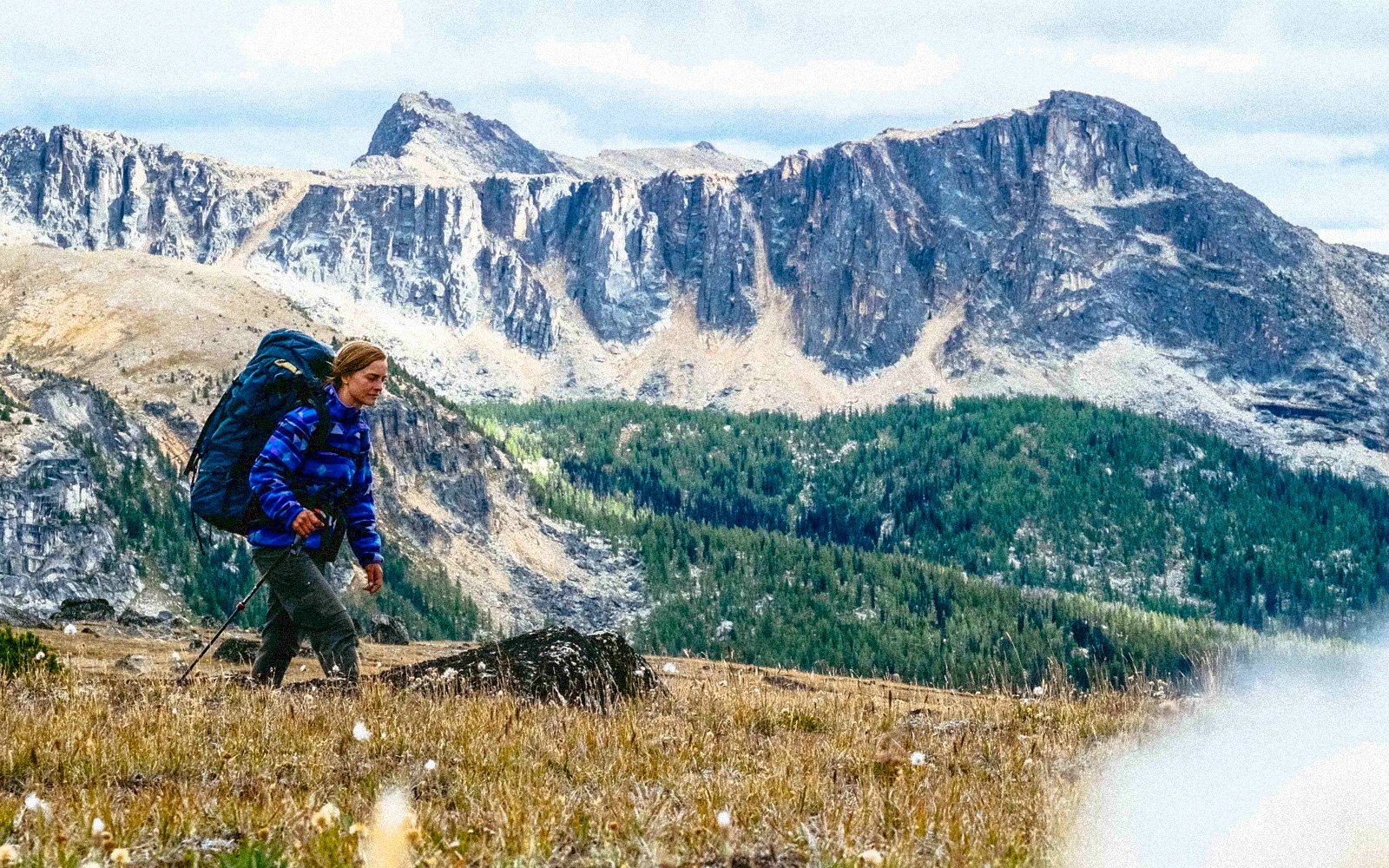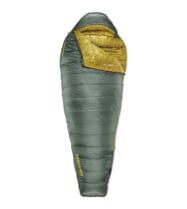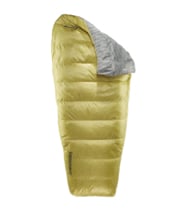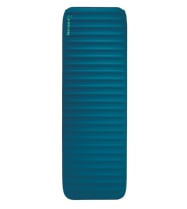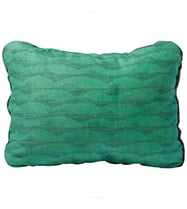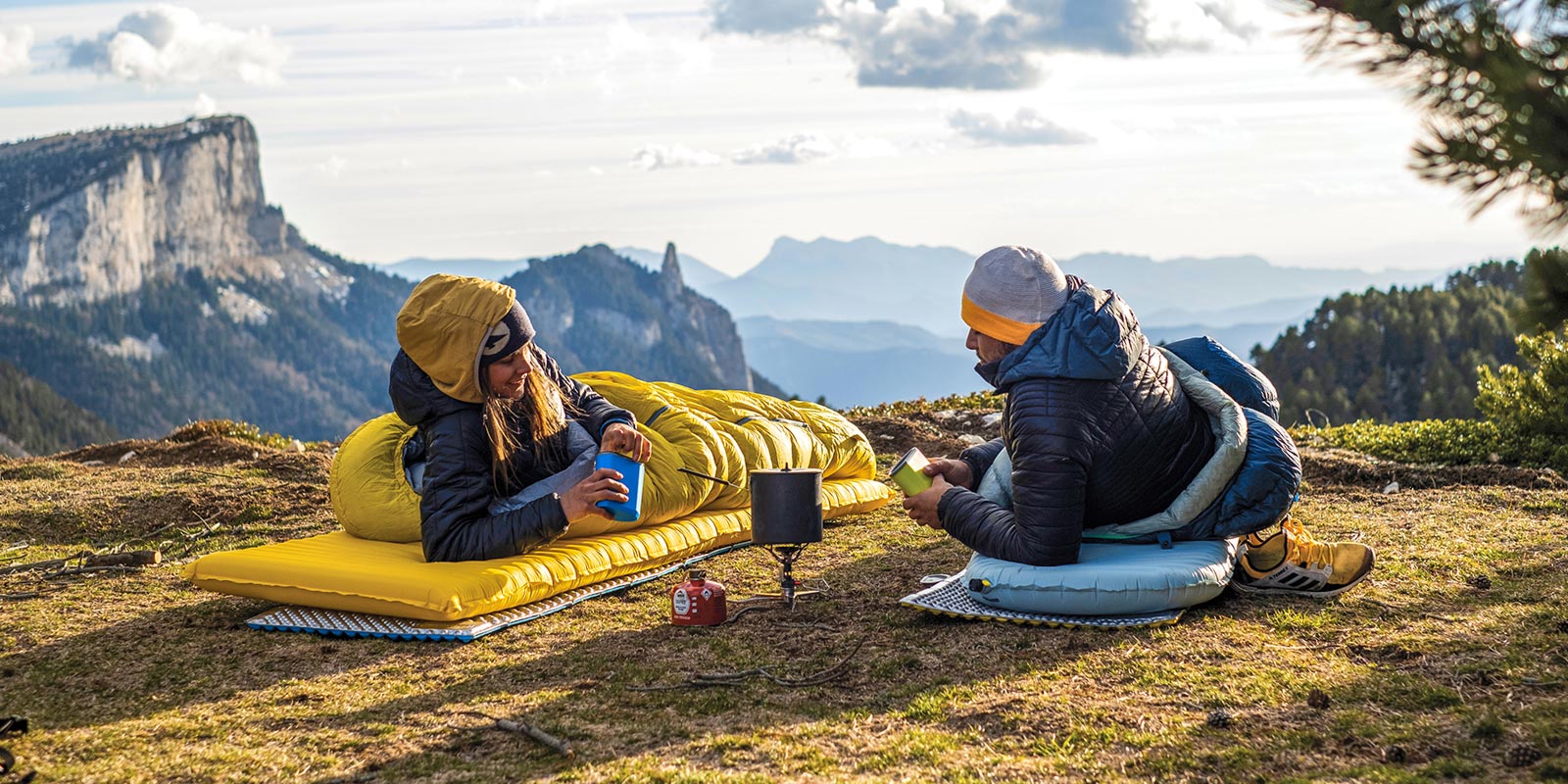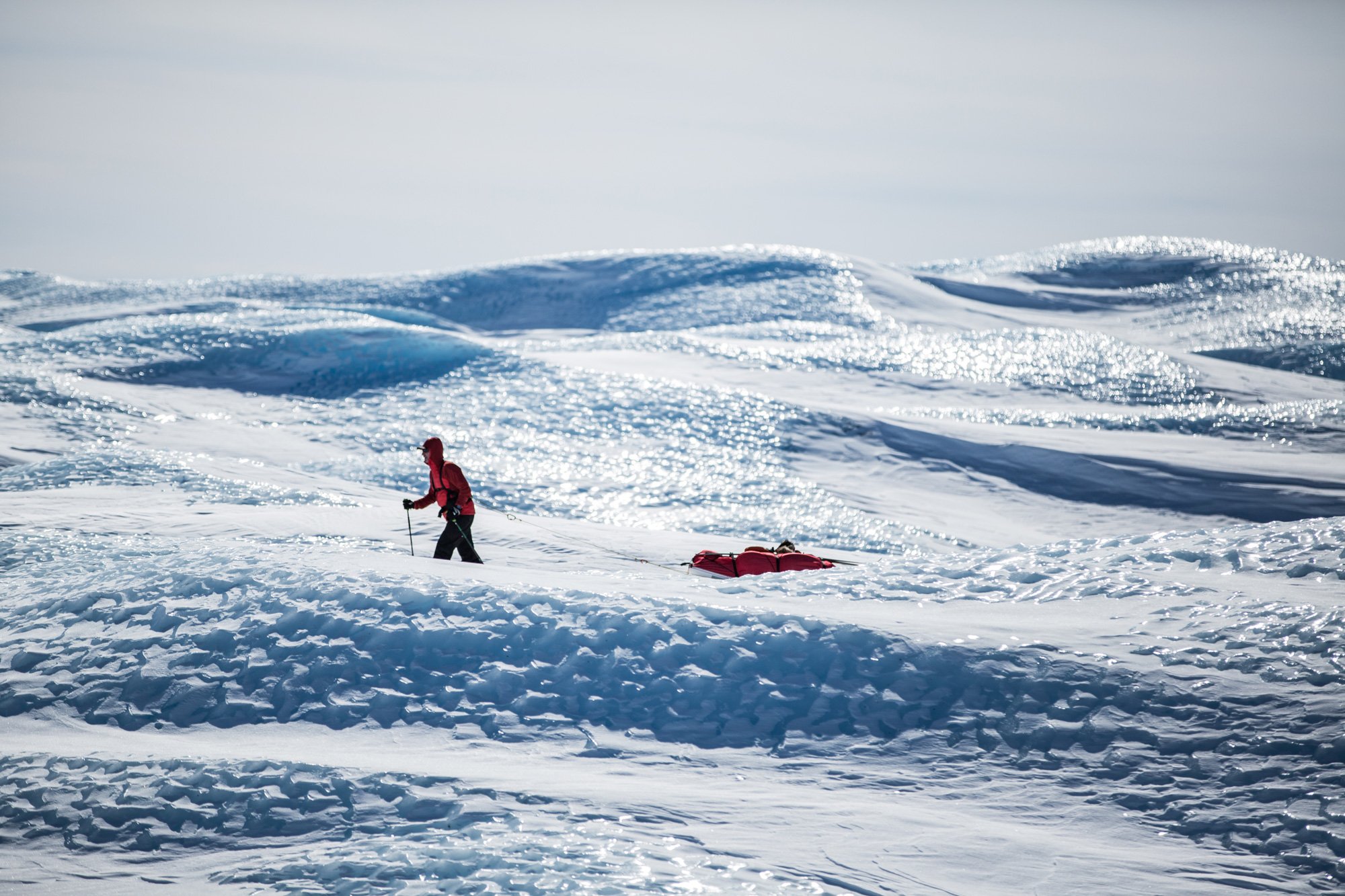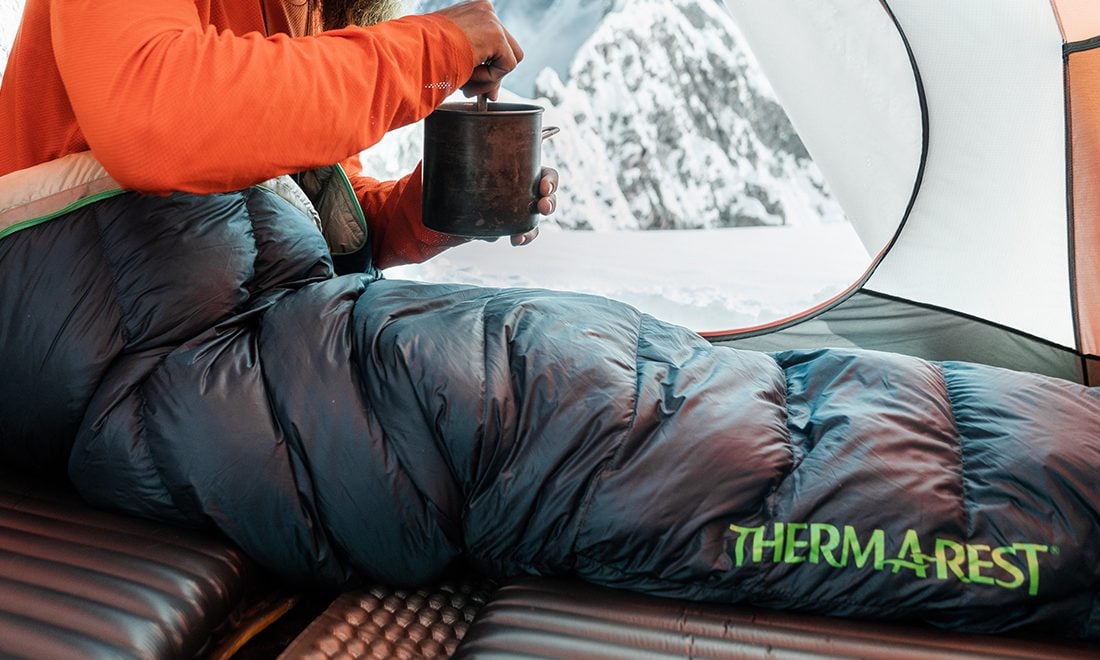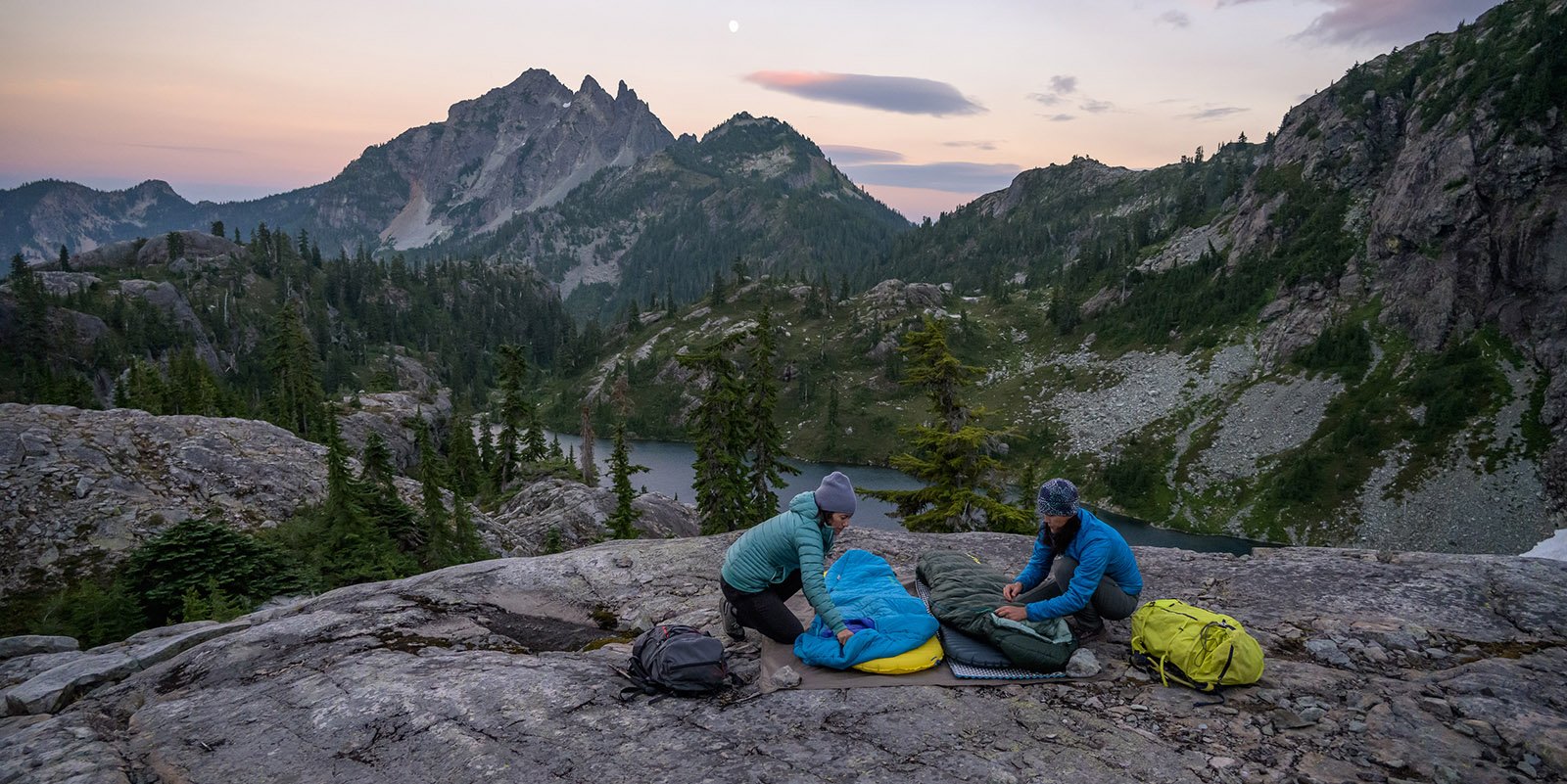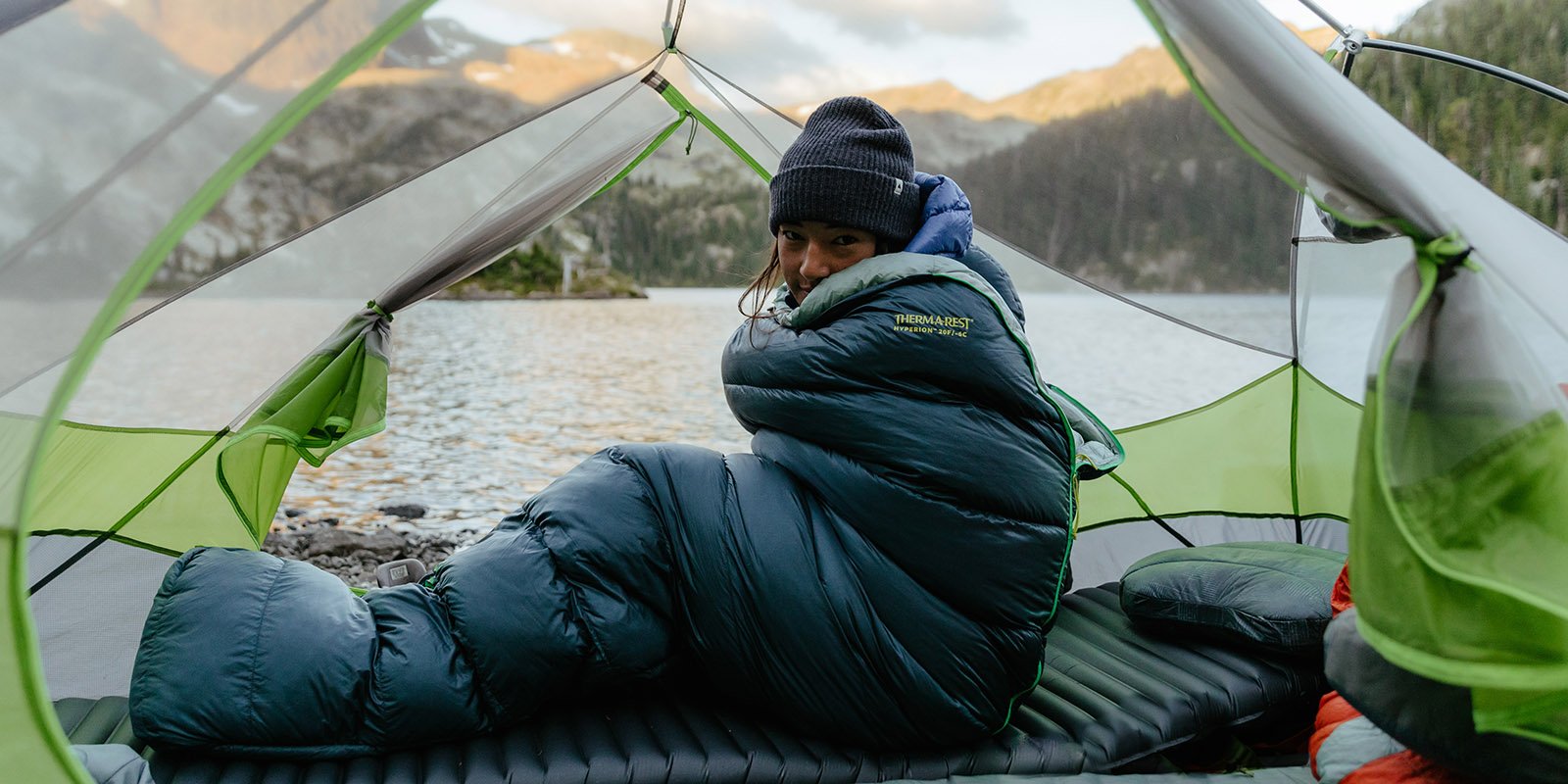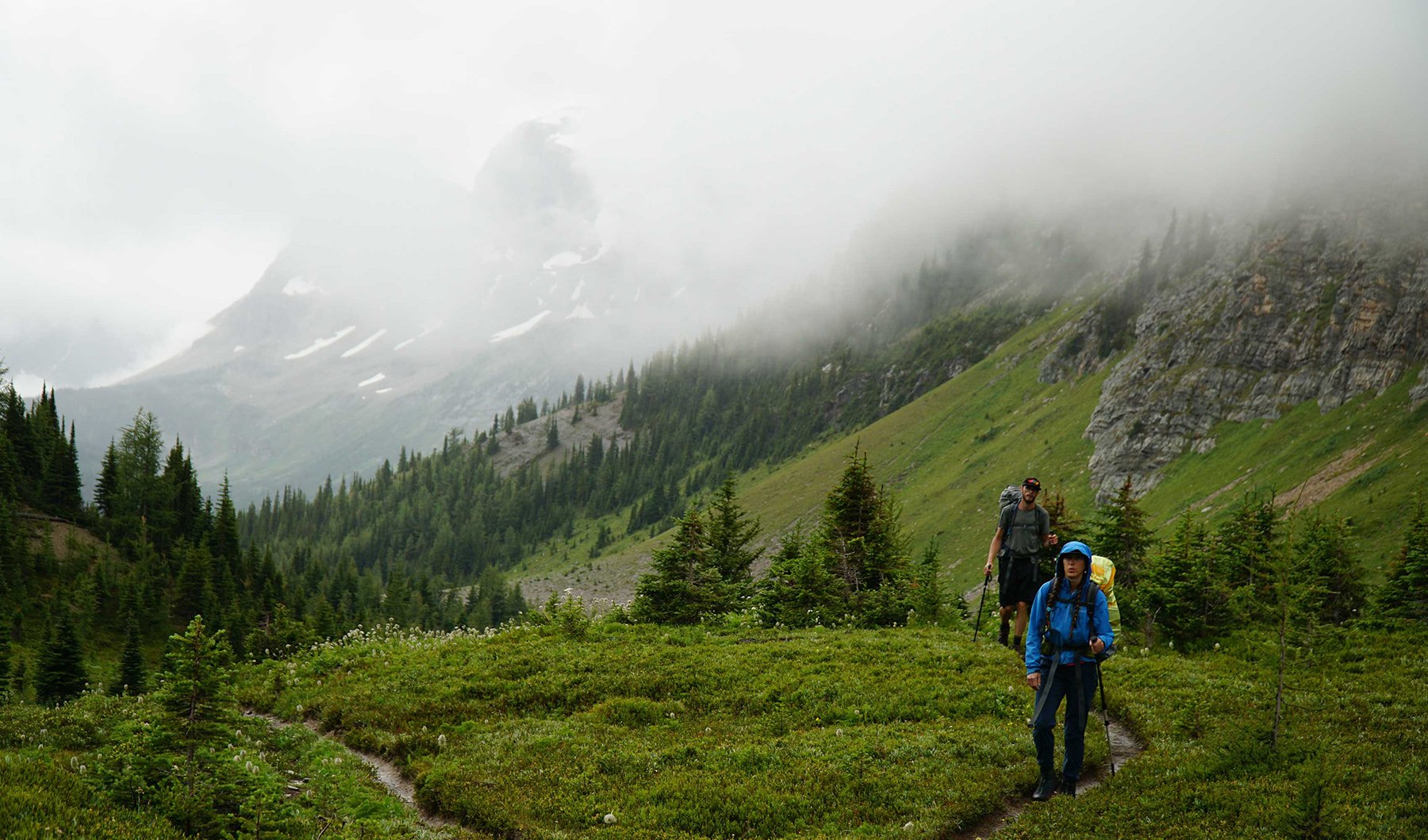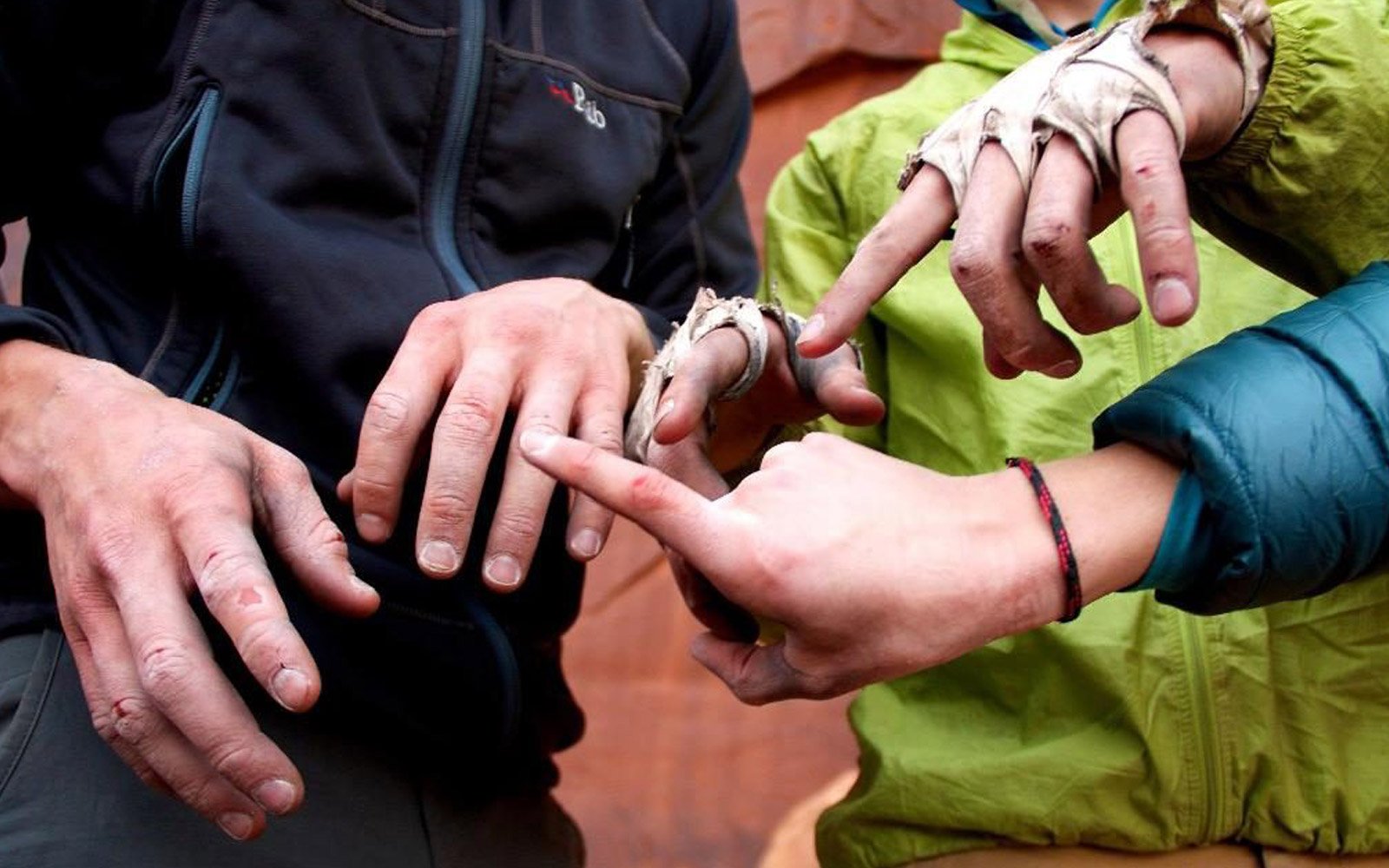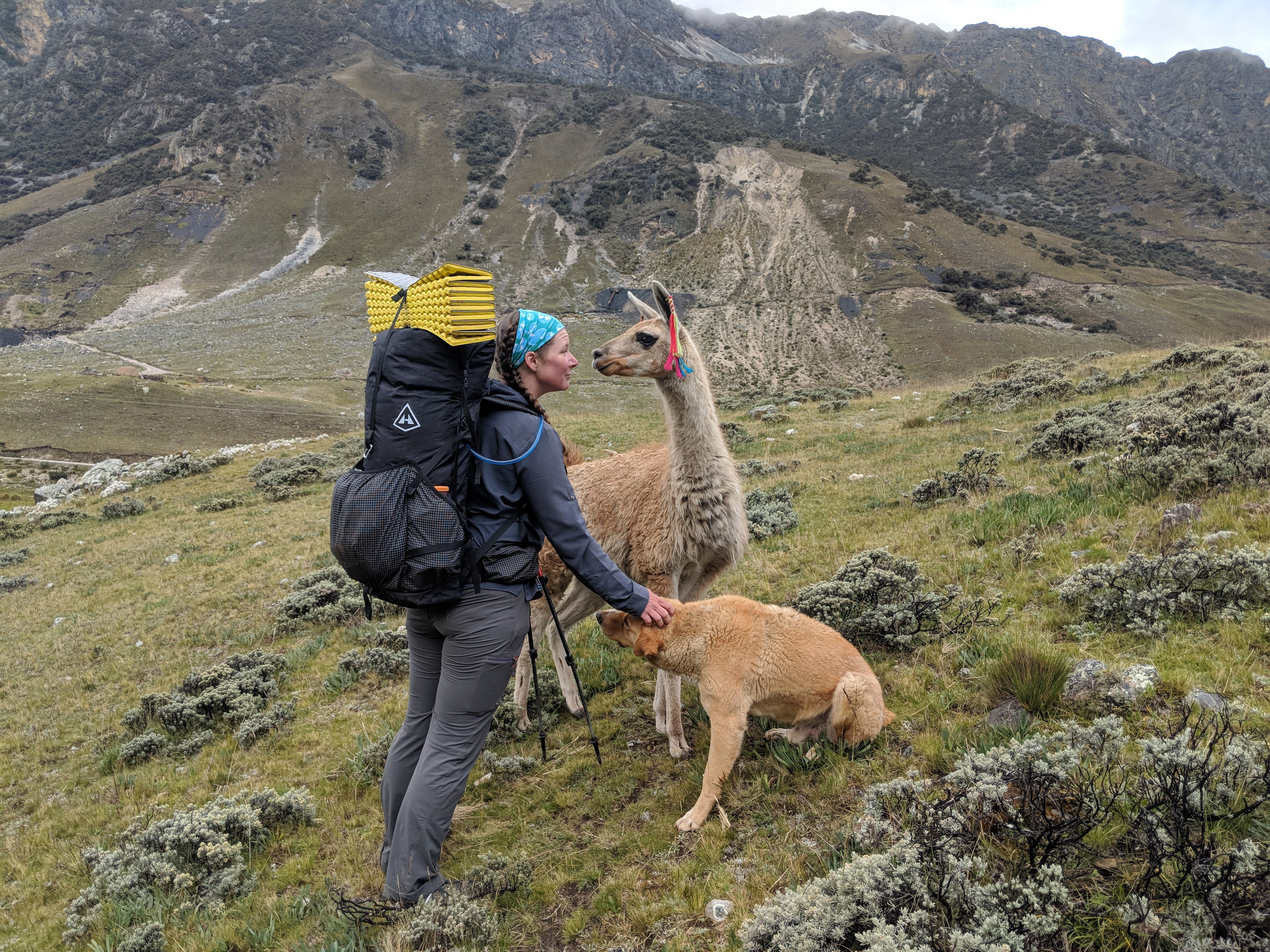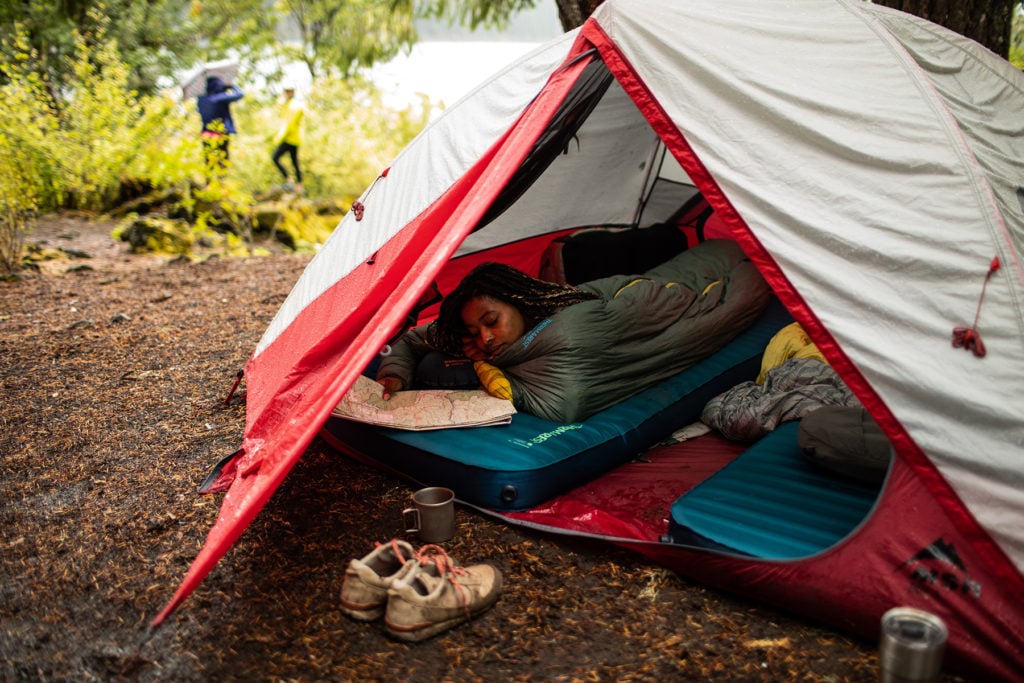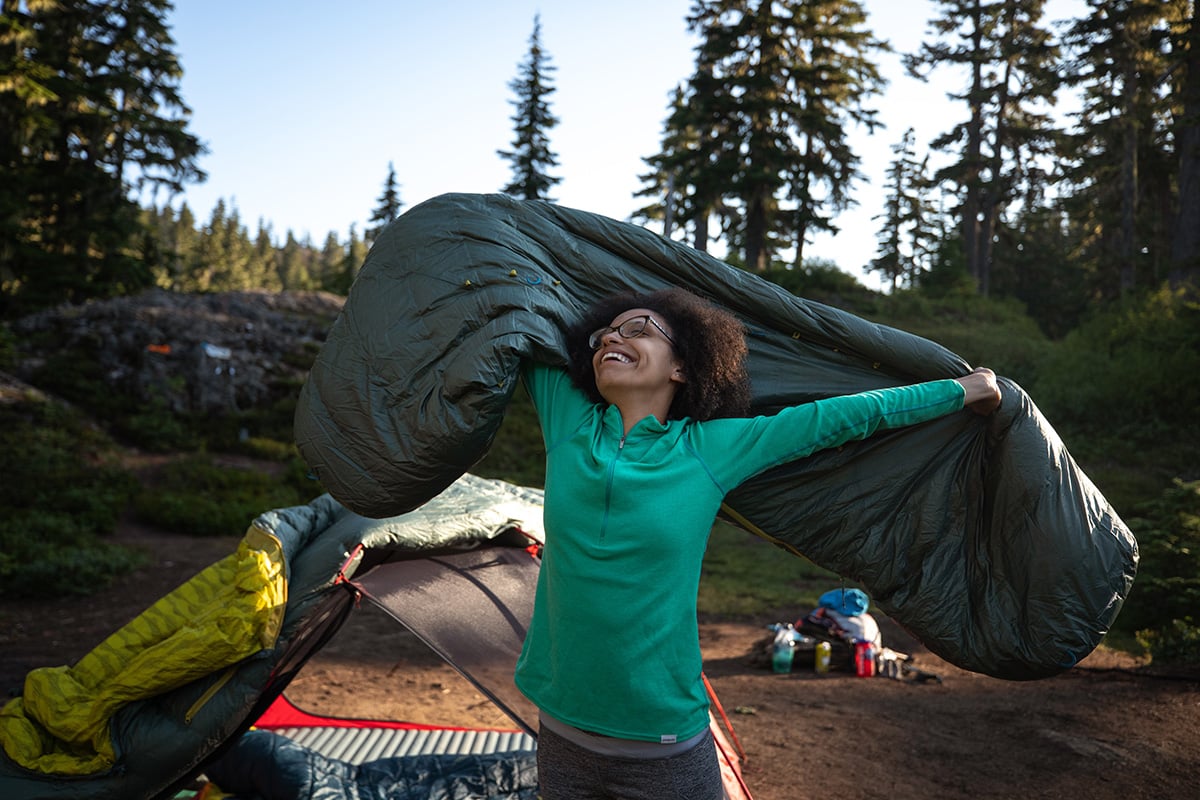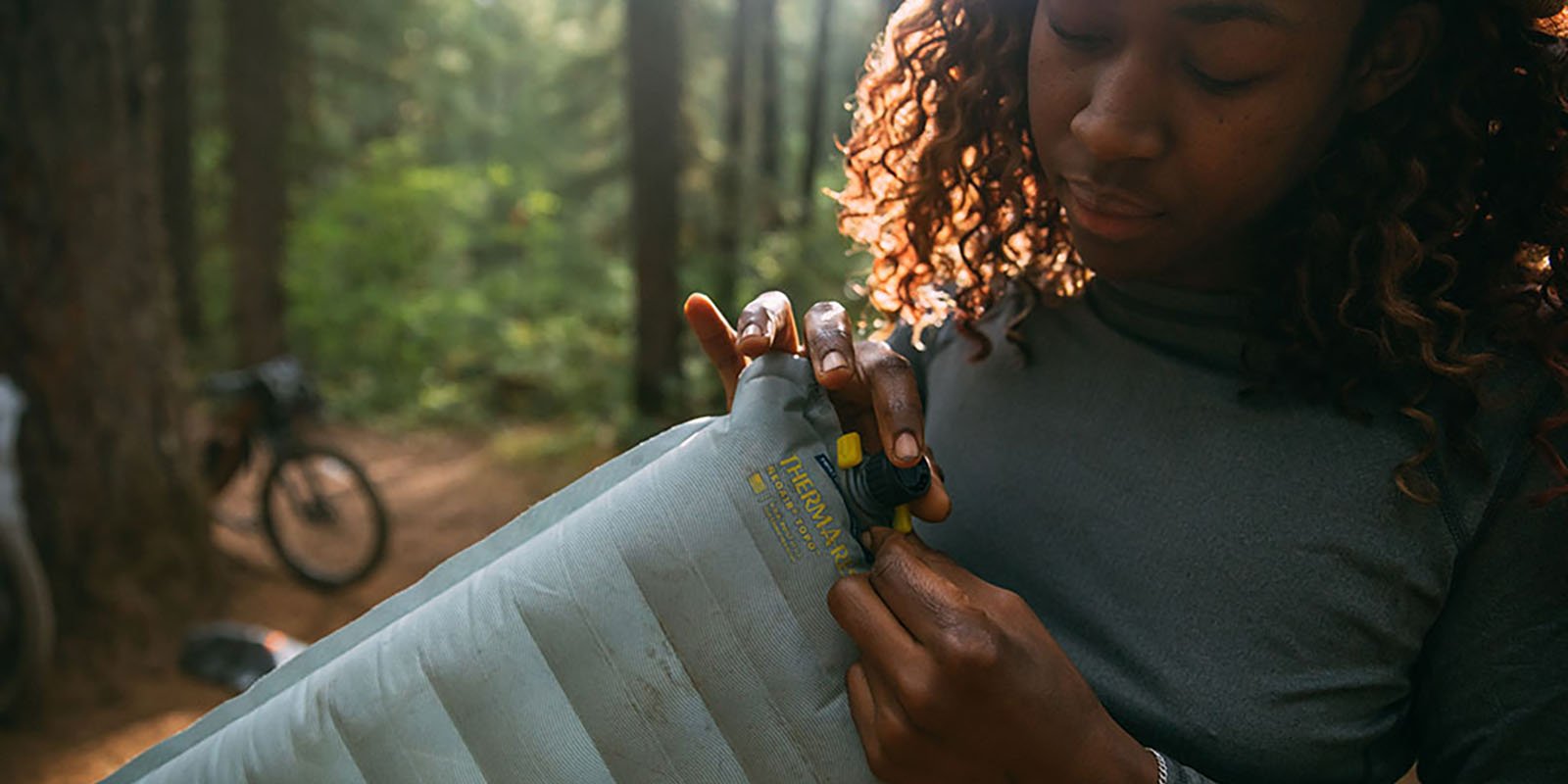Sometimes you have to look in the mirror (or dusty van window) and ask the tough questions. This is especially important for the truths that are casually accepted with little to no resistance. For instance, why do we mindlessly start grabbing our down puffy jackets every fall? Is there a better option? Contributor Jenny Abegg is back with another heavy dose of satire as we ponder why the puffy is the outdoor communities’ go-to layer for colder weather.
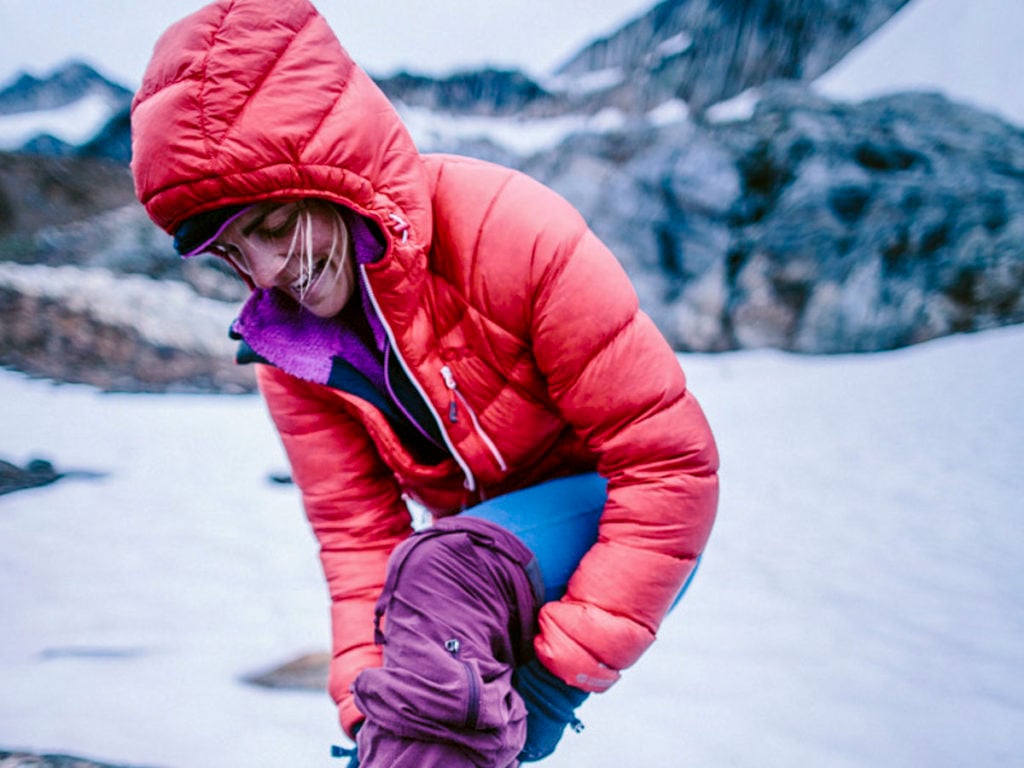
Hey, it’s me again. You might remember me from that blog post awhile back, you know, the one where I convinced you that Leave Your Trace (LYT) is the outdoor world’s newest coolest trend. Hopefully you tweeted it, linked it to your gram, hashtagged it on Facebook, you know, the “ushe.” Maybe you even tried out our theory, exploring all the ways LYT can make your time in the wilderness one to remember.
Today, I’ve got a new story for you and it all went down with the same crew that dreamed up LYT: Sam, Damon, Sadie, Jane and me. It was a sweltering day in early fall, the kind that catches you off guard in your jeans and lurches you back to mid-July whether you want it or not. We would have been better off floating the river with a Yeti full of cold PBR, but instead the day found us at the crag, huddled in our harnesses in the shade of a tree. Staring up at our dangling ropes, I quietly wondered how quickly my climbing shoe rubber would melt on the rock.
Sam sipped cold brew out of a Hydroflask while absentmindedly fiddling with a thread on his jorts. Squinting out at the line of chalked up crimps in front of him, his eyes grew wistful. “Rocktober is coming you guys,” he said with a mouthful of kale chips, “Crisp temps, hot tea, wool socks, puffy ja—”
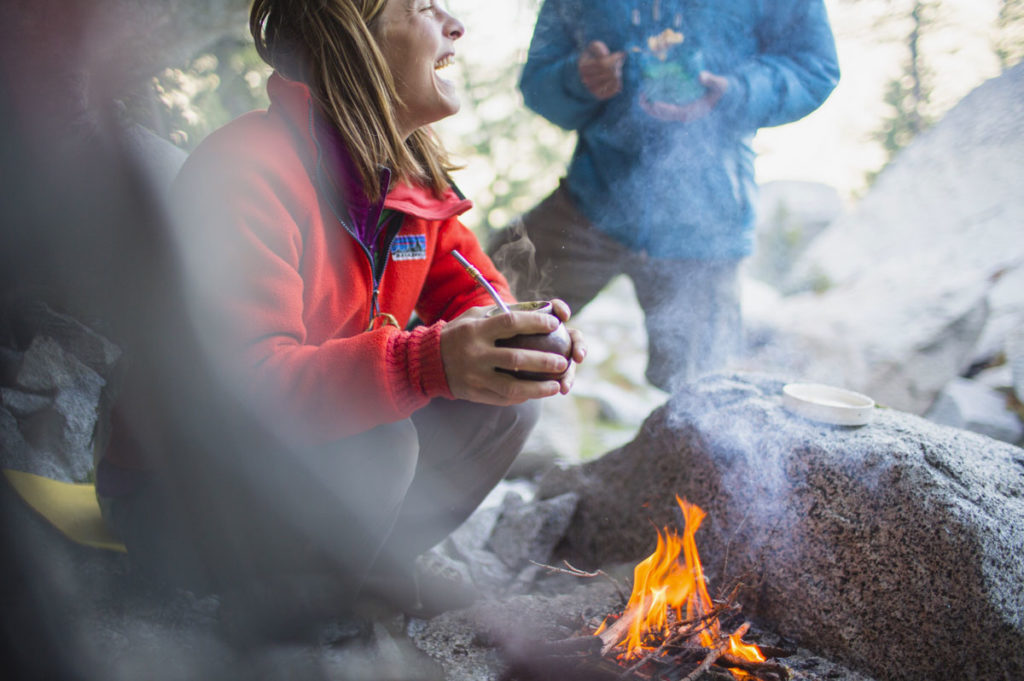
“Duder, you’ve gotta be kidding me,” interrupted Jane, looking up from her phone. “No no no no no, I will not be seen in a puffy. Everyone wears puffys, it’s too much. They’re like Walmart and working a 9 to 5, cookie cutter houses and the evening news. Ewww. We. Will. Not.”
“You know Jane, I totally agree,” piped up Damon, “I feel like the Michelin man when I wear a puffy anyway, and that doesn’t help with morale when I’m trying to lose weight for climbing. If this is the year of not-the-puffy, I’m in.”
“Sounds chill to me. Puffys have been ‘so last year’ for years now,” Sadie looked up at Sam smugly, freeing her long blonde hair from the brim of her trucker hat.
And that’s how it all started—the demise of the puffy: a too-hot day at the crag, cold brew in lieu of PBR, and five friends dreaming of winter a bit prematurely. Down may be the most timeless insulation the outdoor world has ever known, but we trendsetters are moving on—it’s time for feathers to step aside.
5 Reasons Why You Should Ditch Your Puffy
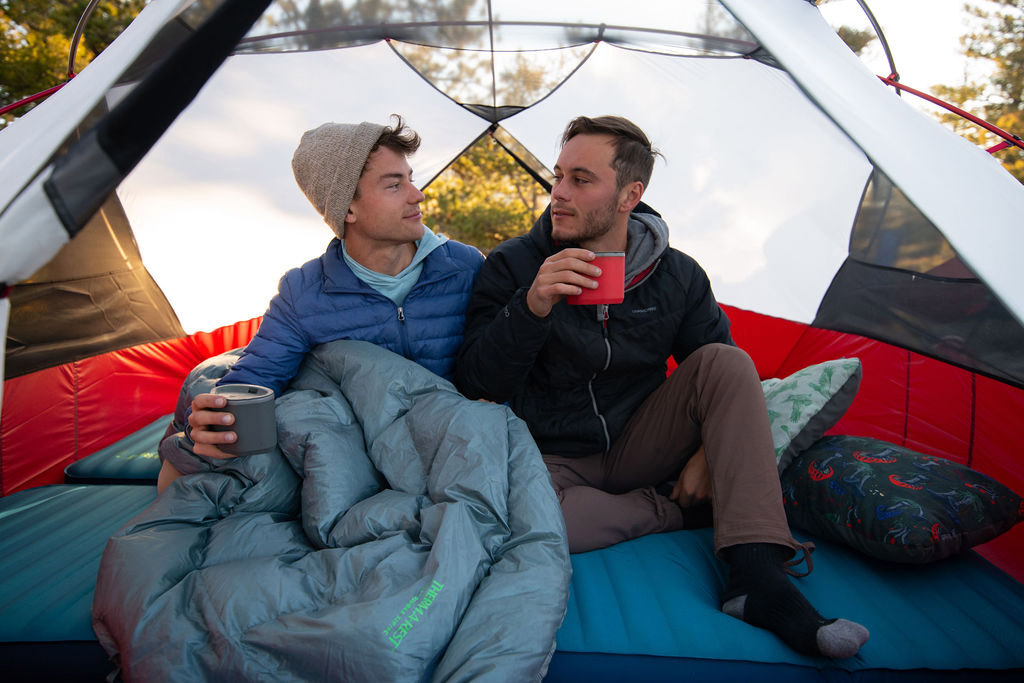
1. Layering is Fun
All the literature on staying warm and dry while being active outside mentions layering as the most important element to comfort and performance. The experts have spoken, and we concur—layering is key, so we’re out to maximize our layers. We can stay warm by wearing a puffy over a baselayer, sure, but that’s not true layering; no, we’ll opt for wearing a wool jacket over a soft shell over a fleece over a synthetic insulator over a sweatshirt over a merino baselayer. It may be a bit constricting and uncomfortable, but layers make you look like you know what you’re doing, and they’re colorful too.
Down is the most thermally efficient insulation available. Feathers trap air between them, and the body naturally heats this air when you don your jacket. Down is so thermally efficient that you don’t need to pile a lot of layers on underneath—much of the time, a simple baselayer will do.
2. Training Weight, Bro
Sure, a puffy stuffs down into the corners of your backpack, and sure, it weighs close to nothing. But tell me how, in heaven’s name, you’re supposed to get stronger if your backpack weighs less and less with every jacket “innovation?!” We’ve gotta stay fit and get fitter somehow, and a wool jacket might be one of the best tools for this. It doesn’t pack down, and weighs at least 10 pounds. Heck, you might need to get a bigger backpack! Better yet, wear the heavy jacket while climbing for maximum training weight, training sweat, and training constriction.
Down is one of the most compressible and lightweight insulator available, meaning that products made with feathers can stuff down into small bundles, and weigh very little. Hands down (no pun intended), down provides both the best warmth-to-weight and warmth-to bulk ratios.
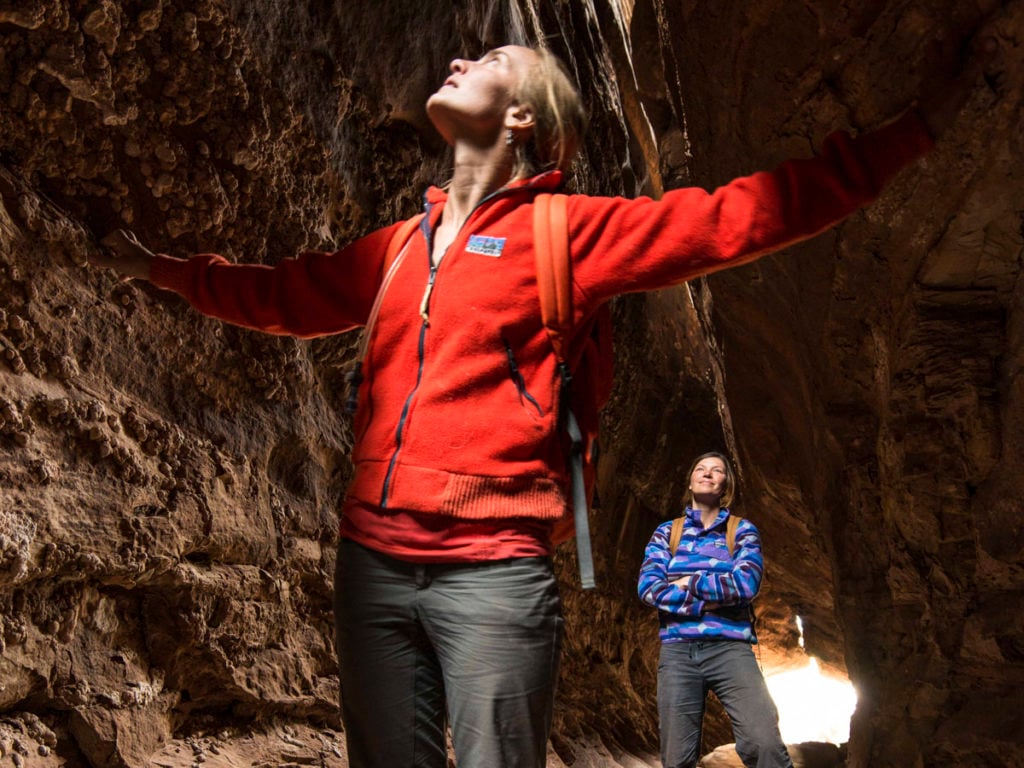
3. New Technology
Down jackets have been around for a while—like, since the 1930s. That’s old. Since then, we’ve invented microwaves, hovercrafts, contact lenses—heck, we’ve invented the internet. So, wouldn’t it follow that humankind has come up with a better way to stay warm in the last 80 years as well? I’d bet my entire record collection and favorite pair of Birkenstocks that new technology has yielded advances in the world of insulation—down can’t possibly still be the warmest and longest-lasting choice.
Like we mentioned above, no insulating material beats down in terms of warmth per ounce. Additionally, down is very resilient, and unlike other fabrics or insulators, it will not thin or wear if cared for properly. Fleece and synthetic insulation will lose loft over time, thereby decreasing their insulating qualities. Feathers retain their loft for a lifetime if cared for correctly, providing reliable warmth throughout the years.
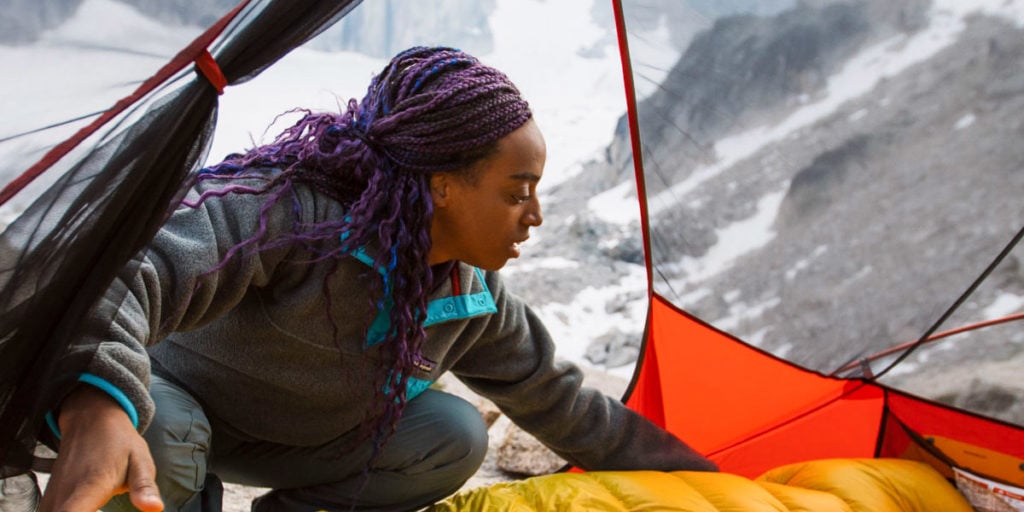
4. Down is for the Birds
We care about the quality of our air and minimizing pollutants that enter the atmosphere, so we’ll opt for insulation that’s manufactured in the safe and sterile confines of a factory rather than gathered from a dirty barn floor, thank you very much. I mean, have you even heard of the Avian flu!? And on that note: if there are holes in your down puffy, please be considerate of the environment and patch them. We don’t need those contaminants floating around our air.
Down is a natural material, and when farmed well, is dramatically less impactful on our environment than the synthetic materials that make up fleece and other jackets. A recent study showed that when put through a standard washing machine, a fleece jacket sheds as many as 250,000 synthetic fibers, which are in fact a form of plastic. If the world launders 100,000 fleece jackets a year, this means that the equivalent of 11,900 grocery bags are being released into public waterways. Now that’s an environmental impact. Furthermore, organizations such as Responsible Down Standard exist to monitor textile companies and lead consumers toward feathers that are farmed responsibly and sustainably.
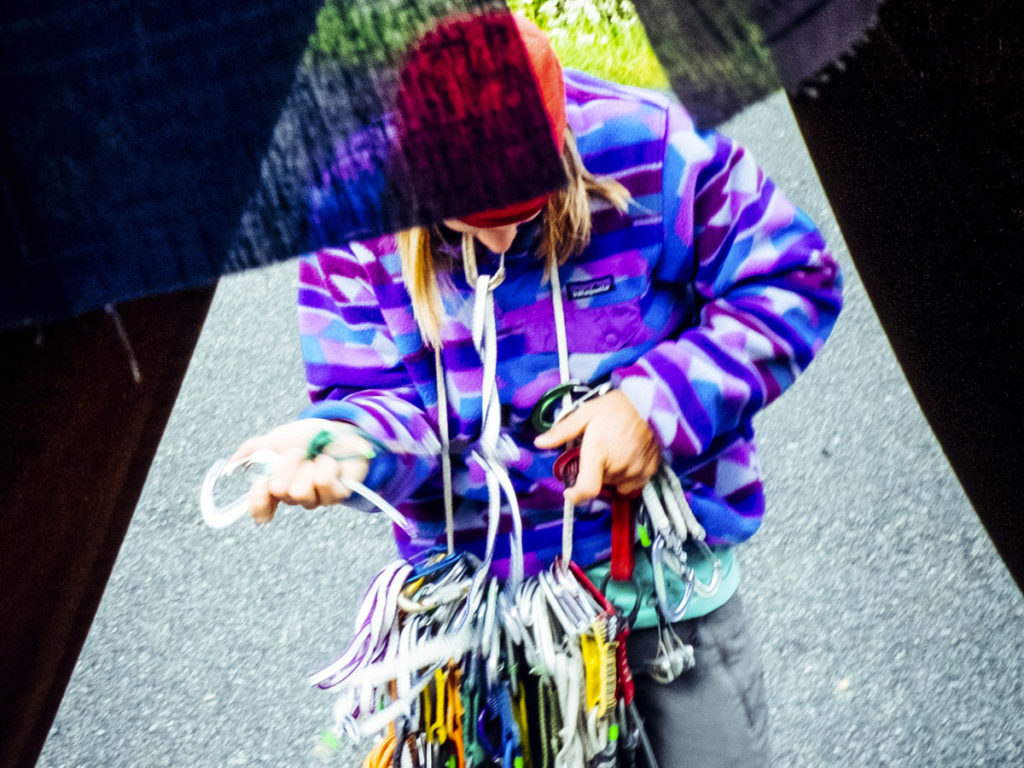
5. You Don’t Want to Get Soft Now, Do You?
Wearing a puffy can at times be akin to being wrapped up in a sleeping bag—they’re warm and cozy, and have the potential to lull you to sleep. Now, if we’re all about climbing big mountains, dropping steep lines, and hiking deeper into the wilderness, do we really want to risk getting too comfortable in a jacket? A layer that offers less warmth and is more abrasive on the skin will provide all the motivation you need to keep moving, warming up enough so that you can take it off!
You can have your cozy, and get rad too! Down is highly breathable, and lightweight down jackets can be a great layer in which to ski, climb, and hike. Additionally, many companies are now treating their down with a waterproof coating, making it hydrophobic (unable to absorb water). Thus, more and more, down jackets are able to withstand the elements and provide both insulation and weather protection for your mountain endeavors.
Related Posts:
- Science of Layering: The Best Camping Sleep System
- How To Safely Reduce Thru-Hike Pack Weight
- Understanding the Camp Quilt
Updated. Originally Published November 2, 2017.
